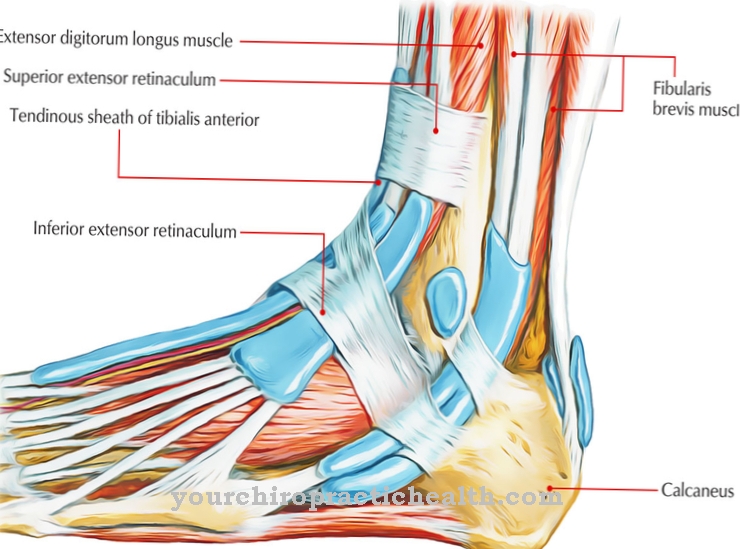Messenger substances are signal substances that serve to transmit signals and information between organisms or between the cells of an organism. The signal substances fulfill different functions. Disturbances in the signal transmission within an organism can lead to considerable health problems.
What are messenger substances?
Messenger substances are differently structured chemical substances that transmit signals between organisms or between the cells of an organism in different ways. These are chemically completely different substances or groups of substances. They are usually classified according to their function or effect. There are smooth transitions in the classification, which are often very arbitrary.
Compounds that perform similar functions can have completely different chemical structures. Every organism, regardless of whether it is a plant, animal or human, sends out messenger substances and also receives messenger substances at the same time. The same applies to every cell within an organism. With regard to their function, messenger substances are divided into hormones, kairomones, neurotransmitters, parahormones, pheromones or phytohormones. According to the mode of action, intra- and interspecific signal substances are also differentiated.
Intraspecific messenger substances exchange information within the species, while the interspecific signal substances are responsible for communication between the species. The intraspecific active ingredients are called pheromones. The interspecific messenger substances are known as allochemicals. However, pheromones and allochemicals only comprise the part of the signaling substances that cause communication between organisms. Hormones and neurotransmitters, in turn, transmit signals between cells or even within the cells of an organism.
Anatomy & structure
The hormones are among the most important messenger substances within the organism. They control the metabolic processes in the body. In doing so, they are either transferred from cell to cell or are transferred from a hormone-producing organ (endocrine gland) to a target organ via the blood or serum. There are also hormones that work within the cell where they are made. What all hormones have in common is the exercise of control and regulation functions within the organism.
Chemically, they are completely heterogeneous. There are, among other things, steroid hormones, steroid-like hormones, peptide hormones and hormones with a different chemical structure. Parahormones, on the other hand, control body functions, but do not meet all of the criteria for hormones. The parahormones include, for example, carbon dioxide, which is involved in controlling respiratory functions. Another group of important messenger substances are the neurotransmitters. They are the signal substances of the nervous system and develop their effect by binding to so-called receptors.
Their effect is limited to the nerve cells. Pheromones as a further group of signal substances are emitted by an organism and received again by an organism of the same species. Allochemicals are messenger substances that are sent out by one organism and received by an organism of another species.
Functions & tasks
The only common property of all messenger substances is their function of transmitting information and thereby triggering reactions at the destination. However, the form of information transmission and the chemical structure of the signal substances differ significantly. Hormones have the task of steering and controlling metabolic processes and regulatory mechanisms within the organism.
They are largely responsible for the function of the individual organs. Among other things, they regulate growth, the mineral balance, blood sugar level, sexual functions, energy metabolism and even the function of other hormones within the organism. The neurotransmitters have a localized effect on the nervous system. They excite and inhibit the nerve cells and ensure the transmission of stimuli. They develop their effect by docking on special receptors.
Among other things, they generate feelings of happiness, suppress pain or generate reactions to certain stimuli. Well-known neurotransmitters are the endorphins or the cytokines. Pheromones in turn control the behavior of organisms of a species. Among other things, they also influence the way people live together. Sympathy and antipathy also develop on the basis of pheromones. Allochemicals are messenger substances that influence the behavior of organisms of different species.
You can find your medication here
➔ Medicines for painDiseases
Due to the diverse functions of messenger substances, disturbances in their interaction can cause serious health problems. Dysregulations in the hormonal system in particular lead to hormone-related diseases. Over-functioning or under-functioning of individual endocrine organs develop typical symptoms. This is how insulin regulates the blood sugar level. A lack of insulin leads to diabetes mellitus.
The thyroid produces the thyroid hormones thyroxine and triiodothyronine. They regulate the energy metabolism. With an overactive thyroid, the metabolism accelerates dramatically, while an underactive thyroid leads to a slowdown of the metabolism with the development of depression, fatigue and poor performance. If the adrenal cortex produces too much cortisol, the typical symptoms of Cushing's syndrome with trunk obesity, full moon face, increased blood sugar levels and a weakened immune system appear.
If even higher-level organs of the endocrine system fall ill, the course of the disease is often complex due to the failure of several hormones at the same time. A typical example is panhypopituitarism. The anterior pituitary gland becomes diseased, and all seven hormones that are formed there may fail. If the mother's pituitary gland is destroyed during childbirth, Sheehan's syndrome develops. It is not just a hormone deficiency or excess that can lead to illness.
Dysregulations in the function of neurotransmitters are also often the cause of serious illnesses. These are mostly neurological or psychological disorders. Depression is often caused by a lack of dopamine. Its binding to receptors can also be disturbed. On the other hand, dysregulation of neurotransmitters can also cause diseases such as Parkinson's or epilepsy.













.jpg)

.jpg)
.jpg)











.jpg)